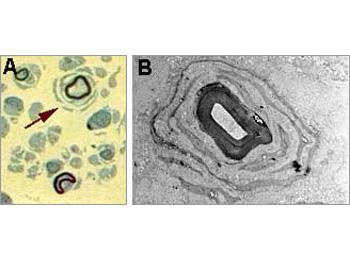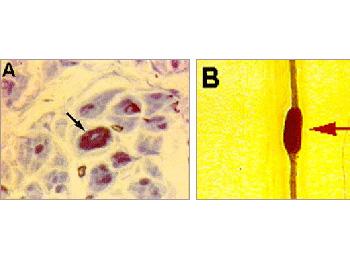
This group of neuropathies is now becoming increasingly recognized due to the dramatic advances in molecular genetics. The symptoms of the various hereditary neuropathies are wide ranging. A common denominator is usually the early onset of mild numbness and tingling in the feet that slowly progresses to involve the legs and the hands and later the rest of the upper extremities. Most of the hereditary neuropathies do have a motor component consisting of distal weakness in the lower and upper extremities. A majority of patients with hereditary neuropathies have high arches in their feet or other bony deformities. The symptoms are very slowly progressive and the majority of the patients are still walking two decades after the onset of their symptoms.
Diagnosis

The diagnosis of a hereditary neuropathy is usually suggested with the early onset of neuropathic symptoms, especially when a positive family history is also present. Prior to the recent genetic advances, the diagnosis was supported by typical findings of marked slowing of the nerve conduction studies on electromyography and a nerve biopsy. Typical findings on a nerve biopsy include the presence of so-called onion-bulbs, indicating a recurring demyelinating and remyelinating of the nerve fibers. With the most recent genetic advances, two major hereditary neuropathies known as "Charcot-Marie-Tooth disease" and "hereditary neuropathy with liability to pressure palsies" can be diagnosed with a simple blood test that identifies the different mutations responsible for these two entities.
There is no effective treatment for hereditary neuropathies. A patient with hereditary neuropathy with liability to pressure palsy (HNPP) must avoid application of pressure to the peripheral nerves as it may result in the nerve palsy.








